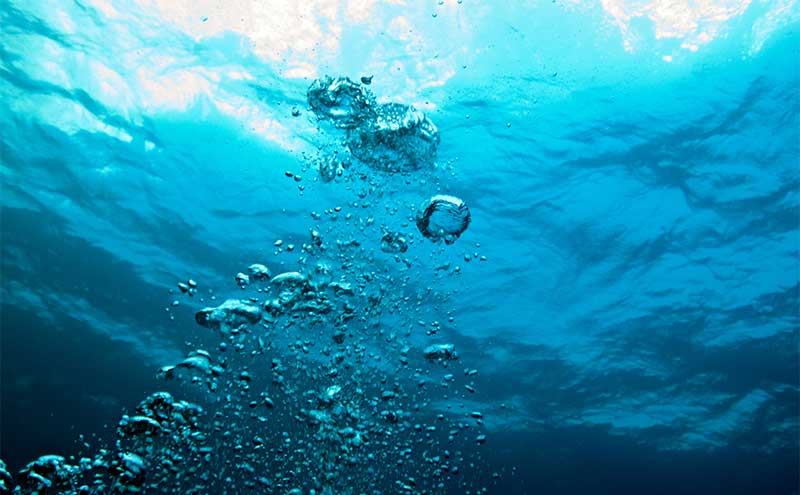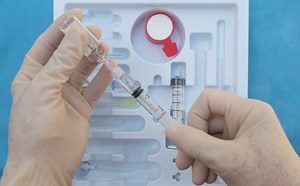
Definitions and Debunking Drowning Myths
In my 4th year of medical school, a boy drowned in the lake near my house. It was a shocking event at the time because my perception had been that drowning was a rare tragedy, more abundant and dramatized on television than in reality. However, during my training, I have learned that drowning remains a significant cause of death in children. Although mortality rates have been trending downward in recent years, CDC data from 2019 shows that drowning is still the leading cause of accidental injury death in children aged one to four and remains one of the top three leading causes of accidental injury death in children of all ages over one year. Children under the age of 14 account for one out of every five drowning deaths and there are approximately ten deaths per day due to drowning. It is important to note that these reported numbers relate to mortality rate alone and do not include morbidity from drowning such as neurological deficits or sequelae from a drowning event. The full extent of injury secondary to submersion is difficult to know as data gathering is challenging due to misinformation that persists surrounding drowning among the public, government agencies and even the medical community.
One area of controversy is terminology. The terms “dry drowning” “near drowning” and “secondary drowning” are often used to describe a drowning event– a simple Google search will return many thousands of results using these phrases. In 2002, the first World Congress on Drowning (WCOD) was held in the Netherlands with the aim of creating a “simple, but comprehensive definition” of drowning to better serve surveillance efforts. Previous terms such as the ones mentioned were judged difficult to use as they mixed the characteristics of submersion/immersion, pathophysiologic changes and event outcomes. As a result of the discussion held at the WCOD, the following definition was put forth: “drowning is the process of experiencing respiratory impairment from submersion in liquid” with drowning outcomes classified as “death, morbidity, and no morbidity.” With the recognition that the single term “drowning” can be used to describe these events it becomes much easier to keep track of how often they occur while still stratifying according to outcome.
Terminology also helps to inform management of these cases. Despite the prevalence of drowning, there is no widely-accepted protocol for the management of pediatric drowning victims. For example, the utility of a chest x-ray will stir significant debate, even without supporting evidence to obtain one. A cross sectional study of 242 pediatric submersion patients found that the majority of pediatric submersion victims without respiratory or neurologic symptoms early in presentation had a normal chest x-ray, indicating that obtaining a radiograph in asymptomatic pediatric drowning patients may be unhelpful. The Wilderness Medical Society Clinical Practice Guidelines state that chest x-ray is not useful for determining prognosis “if obtained at the time of presentation” due to lack of correlation with ABG and outcome.
Cold water drowning is another myth-laden topic. Case reports and anecdotes of children surviving neurologically intact following prolonged submersion in freezing water do exist; however, the few studies that have looked more closely at cold water submersion have found that temperature does not seem to affect outcomes. A retrospective study with 48 pediatric subjects concluded that submersion time was the best predictor of outcome in drowning with high sensitivity AND specificity. At a cut-off value of 10 minutes, they reported that duration of submersion alone was 96.6% sensitive and 89.5% specific in predicting the outcome. The ultimate conclusion was that the potentially beneficial effect of rapid development of hypothermia by cold water could not be proven. A later retrospective study conducted by the same primary author with 61 subjects found that submersion time was the only independent predictor of survival in drowning victims (p<0.01). Water temperature did not prove to be a significant predictor of outcome. A case-control study with 1094 total subjects published in 2014 did not find a protective effect of cold water for drowning victims and reaffirmed the conclusion from previous studies that submersion time was the best predictor of outcome. Although the first two studies may have been underpowered, the third is fairly robust and all conclude that a low water temperature has not been shown as a definitive protective factor.
Ultimately, why does this all matter? Inaccurate information underestimates the significance of drowning and often causes missed acknowledgement of consequences in patients who survive but have severe impairment. A web search found 8 ICD codes available for drowning, most of which were simply variations on location of the incident. What if there were only three? A simple diagnosis of drowning with the ultimate outcome being death, morbidity, or no morbidity. This would greatly simplify classification of the drownings that occur and may translate to more accurate rates of death and morbidity as a result. With better classification, we could improve management as well as public health efforts on education around drowning. If prevention is the goal, working with inadequate data or misinformation will hinder progress toward one day achieving a world where drowning is no longer a leading cause of death in our pediatric patients.
References
- Unintentional drowning: Get the facts. (2020, October 07). Retrieved February 25, 2021, from https://www.cdc.gov/homeandrecreationalsafety/water-safety/waterinjuries-factsheet.html
- WISQARS leading causes of DEATH REPORTS (2019). Retrieved February 25, 2021
- van Beeck, E. F., Branche, C. M., Szpilman, D., Modell, J. H., & Bierens, J. J. (2005). A new definition of drowning: towards documentation and prevention of a global public health problem. Bulletin of the World Health Organization, 83(11), 853–856.
- Ho, B. J., Crowe, J. E., Dorfman, S. R., Camp, E. A., Yusuf, S., & Shenoi, R. P. (2020). Correlation of clinical and chest radiograph findings in pediatric submersion cases. Pediatric radiology, 50(4), 492–500. https://doi.org/10.1007/s00247-019-04588-x
- Schmidt, A. C., Sempsrott, J. R., Hawkins, S. C., Arastu, A. S., Cushing, T. A., & Auerbach, P. S. (2019). Wilderness Medical Society Clinical Practice Guidelines for the Treatment and Prevention of Drowning: 2019 Update. Wilderness & environmental medicine, 30(4S), S70–S86.
https://doi.org/10.1016/j.wem.2019.06.007 - Suominen PK, Korpela RE, Silfvast TG, Olkkola KT. Does water temperature affect outcome of nearly drowned children. Resuscitation. 1997 Oct;35(2):111-5. doi: 10.1016/s0300-9572(97)00036-1. PMID: 9316193
- Suominen, P., Baillie, C., Korpela, R., Rautanen, S., Ranta, S., & Olkkola, K. T. (2002). Impact of age, submersion time and water temperature on outcome in near-drowning. Resuscitation, 52(3), 247–254.
- Quan, L., Mack, C. D., & Schiff, M. A. (2014). Association of water temperature and submersion duration and drowning outcome. Resuscitation, 85(6), 790–794./j.resuscitation.2014.02.024
Chantal Mendes, MD; Jonathan Eisenberg, MD; Stephanie Spanos, MD; Michael Johnson, MD, MS




